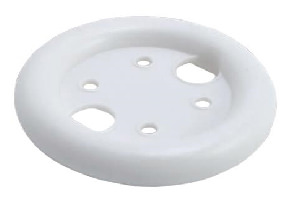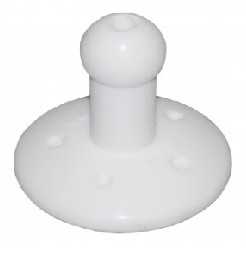Pessary Kansas City
A prolapse occurs when surrounding organs or structures push into your vaginal canal, often causing urinary problems, bowel symptoms, and sexual dysfunction, among other issues. If you’re struggling with a prolapse, Patrick Nosti, MD, FACOG, at Urogynecology of Kansas City, offers innovative treatment solutions. Find out more by booking a prolapse evaluation today.
UROGYNECOLOGY OF KANSAS CITY | 913.262.3000

What is a pessary?
A pessary is a prescribed removable device composed of soft medical grade silicone which is fit specifically for your anatomy. There are many different shapes and sizes available but the two most commonly used are the ‘Ring with Support’ and ‘Gelhorn’.

Ring with support

Why are pessaries used?
Pessaries are used as a conservative nonsurgical option for the treatment of pelvic organ prolapse and/or stress urinary incontinence.
How is a pessary fitting performed?
A pessary fitting is performed in the office. We will first decide the type of pessary to use, which is based on a conversation with you and the indication for pessary use. A ring pessary is easier to remove and tends to work better for smaller prolapse. A Gelhorn pessary is more difficult to remove but tends to work for larger prolapse.
Next, an exam will be performed to estimate the vaginal caliber. A sizing pessary will then be placed and you will have a chance to provide feedback (e.g. comfort, bladder function, etc). We will also ensure the pessary remains in place. Assuming (a) the pessary is comfortable and (b) it remains in place with walking, bending and movement, the fitting will be considered complete. If you plan to manage the pessary you will be taught how to remove and clean it prior to leaving the office.
How are pessaries managed?
If you cannot or do not want to manage the pessary you will be asked to follow-up in our office every 3 months to clean the pessary and ensure the tissue is healthy. This is critical as complications are rare provided appropriate follow-up occurs.
If, on the other hand, you are able to remove the pessary you can follow-up on a yearly basis or as needed. Once removed you simply clean it with warm soap and water. Harsh chemicals or detergents are not recommended. You can remove the pessary as frequently as every night or every several weeks. Removal on a regular basis decreases the risk of common side effects including vaginal discharge, odor and erosion.
What are the risks associated with pessary use?
Risks associated with pessary use are rare and easily managed. Common side effects include vaginal discharge, odor and spotting. If spotting occurs, you should notify our office as this may be a sign of an erosion. An erosion occurs when the pessary rubs against the inside walls of the vagina. In this case, the pessary is typically left out to allow the erosion to heal. If erosions occur repeatedly, you may need a different size pessary or a pessary may not be a good option.
What else should I know about pessaries?
- Pessaries can fall out but they cannot get lost. The vagina is a closed tube. A pessary cannot go anywhere else in the body. If the pessary falls out with straining or lifting it may mean the pessary is too small or a different type of pessary may be required.
- You can leave the pessary in place during intercourse if it is comfortable.
